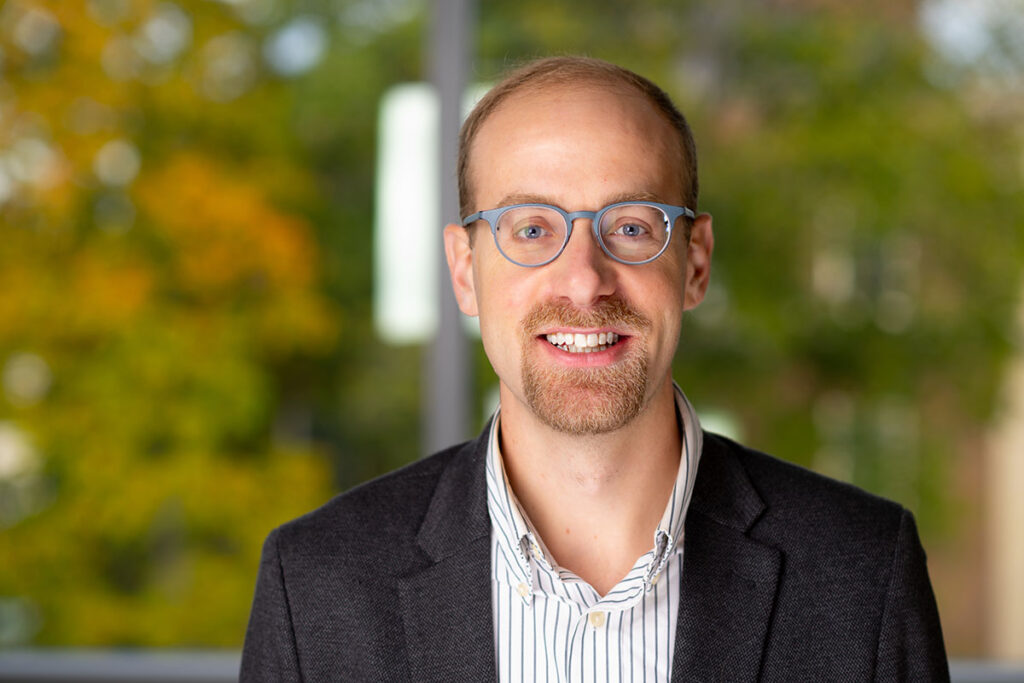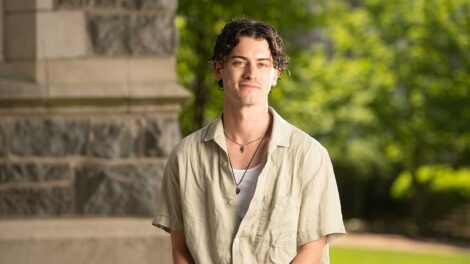Learn more about David Mante, associate professor of civil and environmental engineering

David Mante | Photo by Adam Atkinson
Research area: Our lab focuses on developing innovative solutions to concrete bridge infrastructure needs—simply put, how can we help improve the design, construction, and repair of concrete highway bridges? We’re currently finishing an experimental project where we fabricated and tested full-size bridge deck pieces in the laboratory. In this project, we explored improvements to connections between precast concrete bridge deck panels and utilized cutting-edge specialty polymer concretes to achieve faster, simpler connections. Previous work in our lab has focused on developing and implementing new types of electronic sensors for measuring concrete material properties and also conducting field studies to improve predictions of camber (upward deflection) for precast, prestressed concrete bridge girders.
My Lafayette journey: I first visited Lafayette more than 20 years ago as a high school track and field recruit—a potential undecided engineering major. During my visit, I was enamored with the engineering program and the track team, but life led me in a different direction. I’d next return to Lafayette for the 2016-2017 school year as a visiting assistant professor of civil engineering. During that first whirlwind year, I taught six classes (including Reinforced Concrete Design) and began envisioning what it would take to resurrect the historic Lafayette College Concrete Laboratory (LCCL) that once lived on College Hill.
At the end of that first year, I transitioned to a tenure-track assistant professor role. In the years that followed, I partnered with many great students to upgrade the existing infrastructure of the LCCL, acquire and rebuild expensive testing equipment, and expand the experimental capabilities of the lab. With immense support from the College, Engineering Division, Civil Engineering Department, and local concrete industry partners, our vision for a first-class structural concrete testing laboratory on the Hill became a reality. Since the laboratory startup, I’m grateful to have partnered with multiple regional and national entities to use our unique skills to help improve concrete highway bridges.
What I will be teaching in the fall: I’m teaching an ES 101 module (Introduction to Engineering) where students design, construct, and load test an 8-foot-long bridge out of a foam material, an entry-level engineering mechanics course that helps students understand force equilibrium (ES 226: Statics), and an intermediate engineering mechanics class that teaches students how to select appropriate elastic materials and size structural members to elastically resist expected forces (ES 230: Strength of Materials).
Read more about faculty members who have been promoted to associate professor with continuous tenure.


